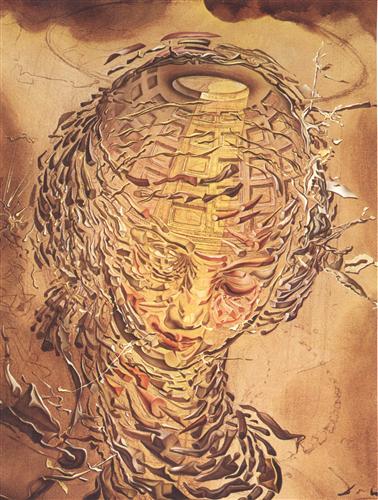 |
| Salvador Dali, Raphaelesque Head Exploding |
Ordinary
reality does refer to the encounters and events we experience in external
reality. But the feelings, hopes and anxieties which comprise our internal experience
are also part of our ordinary reality. These too are experiences we have, or
which happen to us. By ordinary reality I mean the ensemble of our internal and
external realities, as we experience them.
Psychic
reality is the realm where we reflect on what happens to us. Our psychic
reality is constituted by what we make (consciously and unconsciously) of our
experiences, both internal and external. For that to
happen, for us to have a psychic reality at all, some kind of representation of
our experience is necessary. If we have no way of representing to ourselves
what we experience, we cannot process it […].
A large
part of psychoanalysis lies in helping the patient create a psychic reality out
of ordinary reality, by discovering how to represent this experience to himself
so that the psychical transformation of that experience becomes possible (p.62)
"Maintaining
an analytic stance” means actively holding on to a particular frame of mind..[…] Keeping oneself attuned to the realm of psychic reality rather than
ordinary reality requires a particular sort of effort. There is resistance to
overcome. [...] (p.59) A
resistance to the pull of ordinary reality so as to stay in the realm of
psychic reality. Particularly when patients do not speak from their psychic
reality but use ordinary reality defensively, the analyst must work all the
harder to hold a position within the psychic reality, knowing that that is
where the analytic work is done. (p.61)
[...] With the disappearance of something which belongs to ordinary, sitting-up, conversation-like reality, space is made for something different.[...] The lying down, the frequency and the silence are all examples of how the analytic situation is set up so as to embody the negation of ordinary reality.[..](p.68)
Parsons,
M.( 1999) Psychic Reality, Negation, Analytic Setting. In G. Kohon (Ed.) The dead mother: the work of Andre Green (pp.
59-75), London: Routledge
Δεν υπάρχουν σχόλια:
Δημοσίευση σχολίου